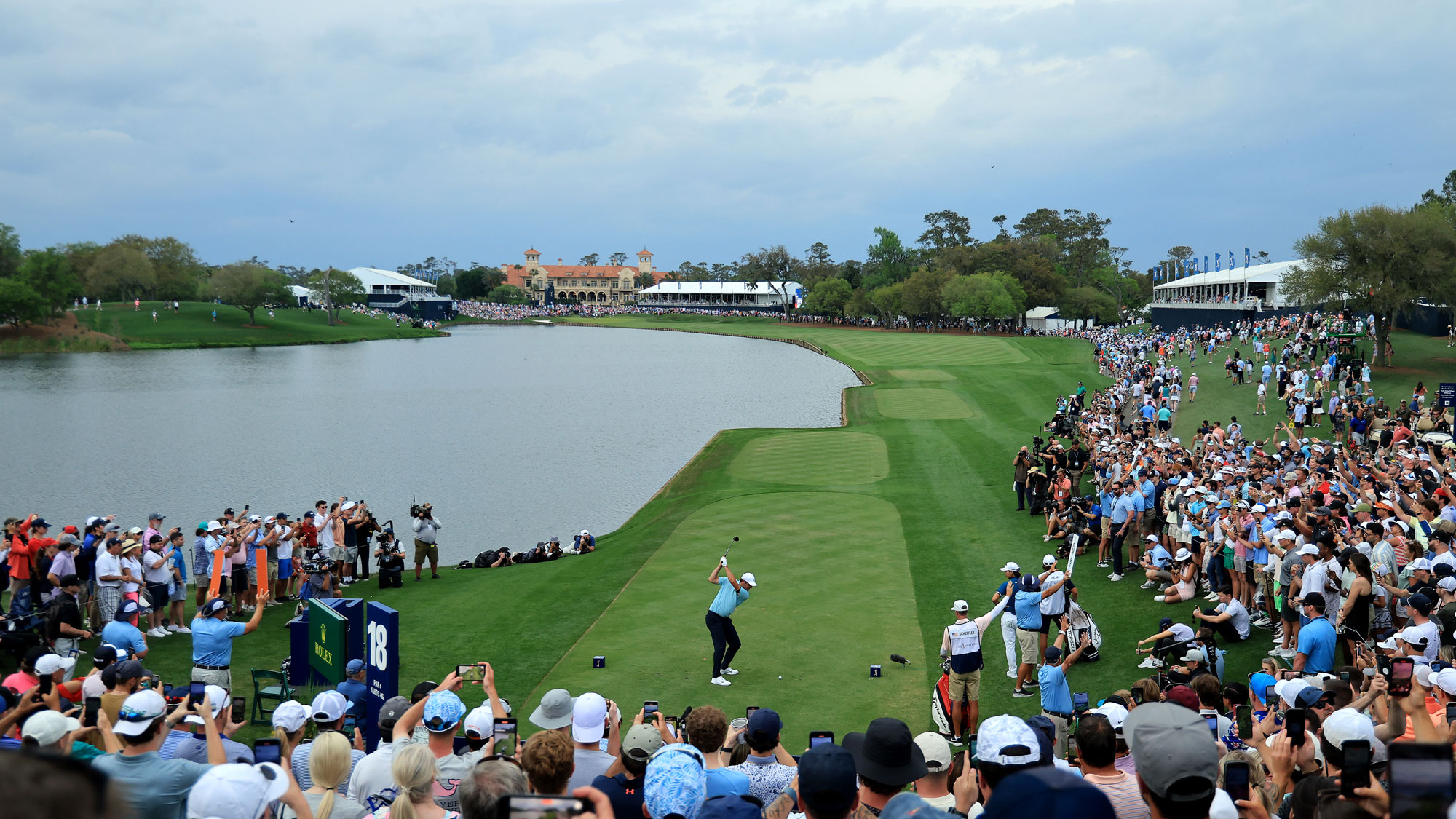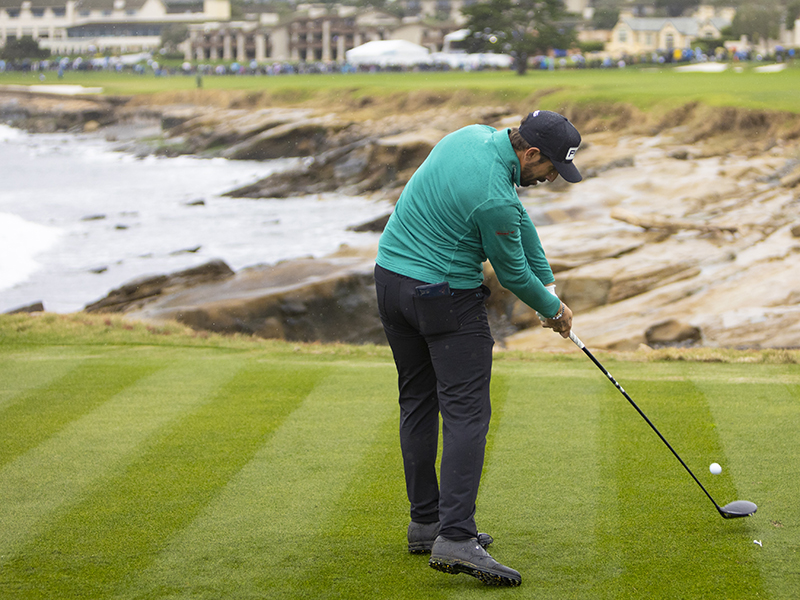Water Left And Out Of Bounds Right... Take The Fear Out Of Tight Tee Shots With Four Expert Strategy Tips
Golf Monthly Top 50 Coach Andrew Reynolds shares four simple strategy tips to help you overcome those trouble-laden, tight tee shots...


No matter how well your round is going, it's hard to escape the fear that washes over you when faced with tight tee shots. The extent of the danger will vary depending on where you play your golf, but one thing is for certain... any combination of water, out of bounds, waste areas and trees will almost certainly require a strategic approach.
With that in mind, we asked Golf Monthly Top 50 Coach to share four simple strategy tips for navigating those scorecard destroying, golf ball swallowing monsters...
How To Approach Tight Tee Shots
The tight drive with trouble on both sides fills most golfers with dread. It's important in this situation to change your thinking, and shift your focus to one thought only... find the fairway!
I would recommend picking out a small target point beyond the fairway or on the horizon, and then taking dead aim on that exact spot. Work hard on really aiming at, and hitting it on that line.
By focusing on a very small target, even if you miss, you’ll probably still end up on the fairway. If you just aim at ‘the fairway’, you could end up anywhere. So think small, aim small, miss small. If you think big, you’re more likely to aim big and miss big.

Clubface alignment
Take a little more time over clubface alignment on tight tee shots. A good addition to your pre-shot routine is to check your line from behind the ball, then pick out an exact spot on the tee to hit over – perhaps a blemish or a small stone.
Jack Nicklaus used to do this, and there’s usually something on your line you can use, although you can’t deliberately put something down. Make sure you set up with the clubface aiming exactly over this spot, and work hard on getting everything square.
Subscribe to the Golf Monthly newsletter to stay up to date with all the latest tour news, equipment news, reviews, head-to-heads and buyer’s guides from our team of experienced experts.
Shot pattern catalogue

We've all got different swings and different swing speeds, and this exercise will help when you face a tight drive. The next time you visit the driving range, take your three longest clubs and hit nine shots with each.
Three with each club should be your very hardest swing; three what you feel to be a smooth swing; and three taking ten percent off your smooth swing. Catalogue where each ball goes; there will be a pattern.
Use the catalogue
If you find that your flat-out swings with a driver go a little bit left, and if there’s out of bounds up the right, a flat-out swing should take that right-hand side out of play.
If your smooth swing (minus ten percent) with a 3-wood drifts right, use that swing on tight drives with trouble up the left, and so on.
You can’t just get over the ball and be hopeful when you face a tight drive; you’ve got to have some intent to your swing.
The Golf Monthly archive is a gold mine of brilliant reads, documenting a journey through the history of golf dating back to our first issue in 1911. Take advantage of over 100 years of invaluable tips from the best tour professionals and coaches in world golf, by subscribing to the online Golf Monthly Archive.

Location: Royal Cinque Ports
Andrew was appointed Head Professional at Royal Cinque Ports in 1978, aged just 23. He is only the sixth professional in the club's 125-year history. From 2010 to 2013, he was lead coach for the Mens England “A” squad and helped work with many established European Tour players. Andrew also enjoyed success on the European Senior Tour, most notably his top-20 finish in the Senior Open Championship at Turnberry.
Teaching philosophy:
Different golfers have different aims, so players' hopes must be discovered before a ball is struck. The player is buying our experience to take them on a journey which will, hopefully, exceed their expectations. I try to keep the learning experience fairly light to keep the player relaxed and make the time together enjoyable for us both. We generally need to ‘de-clutter’ players' golfing brains and put a filter system in place to help people understand the important factors.
Most significant influences:
Ernest Jones’s book, ‘Swing the Clubhead’, who stressed that if your set up was neutral, balanced and correct, all body actions were responsive to the club swinging. Peter Thomson, too. He chatted to Henry Longhurst, whom he allowed to explain his simple thinking - set up squarely, point the club at the target, take it away from the ball on the same path that the club attacks the ball on, then from the top of the backswing just bring it back to the ball. Both Jones and Thomson understood the difference between cause and effect. Modern technology allows us to analyse the golf swing in a very technical manner, which has now proved that both were ahead of their time in making a golf swing a simple exercise. We must remember that it’s the clubhead that we are swinging.
Advice for practice:
A structured and disciplined practice session is the only way to develop your golfing skills to the maximum. Always make sure that your setup is perfect before any swing begins - it’s pointless to work on a swing change with an inconsistent and changeable setup. A different setup means a different swing.